
| Quantity | 3+ units | 10+ units | 30+ units | 50+ units | More |
|---|---|---|---|---|---|
| Price /Unit | $614.19 | $601.65 | $582.85 | $557.78 | Contact US |
Player One Saturn-C SQR (IMX533) 9MP Color Camera Planetary Camera + Active Cooling System (ACS)
Design for Lunar, Solar Mosaic and DSO Lucky Imaging!
Saturn-M
SQR and Saturn-C SQR are the most powerful planetary cameras in our
history! Based on IMX533 BSI sensor, high image quality, high resolution
and square format, and non-amp-glow feature, the camera is great for
lunar, solar mosaic and DSO lucky imaging.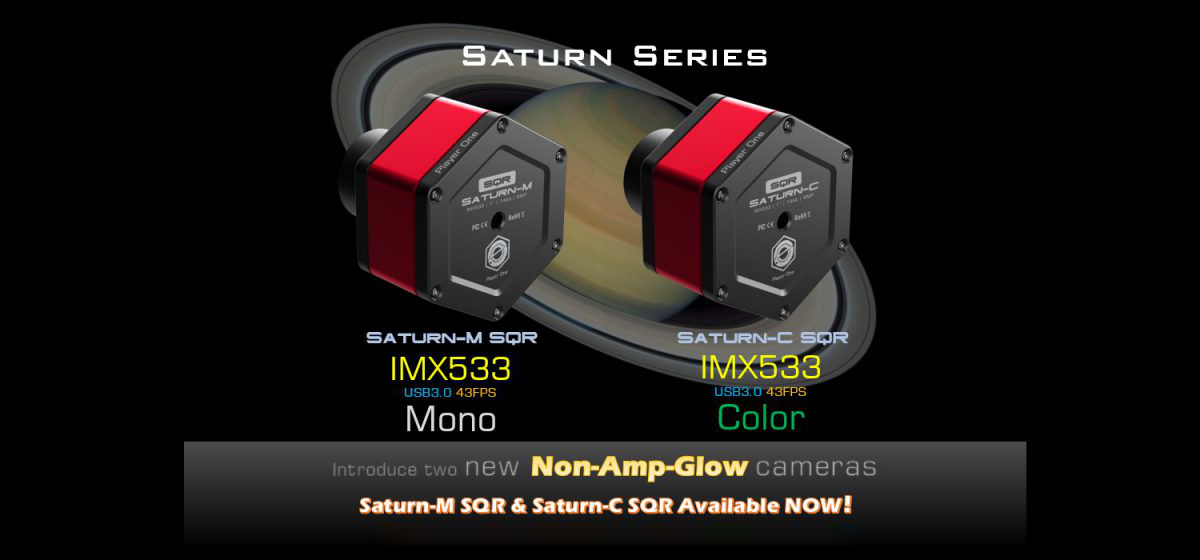
Product Description:
Saturn-C
SQR (IMX533) camera is developed by Player One Astronomy. SQR means its
sensor is square. The camera adopts an original IMX533 1" square format
color sensor for Sony. The 3.76um pixel size accommodates a well depth
of 73Ke with a total of 9MP (the resolution is 3008*3008), and the
diagonal is 16mm.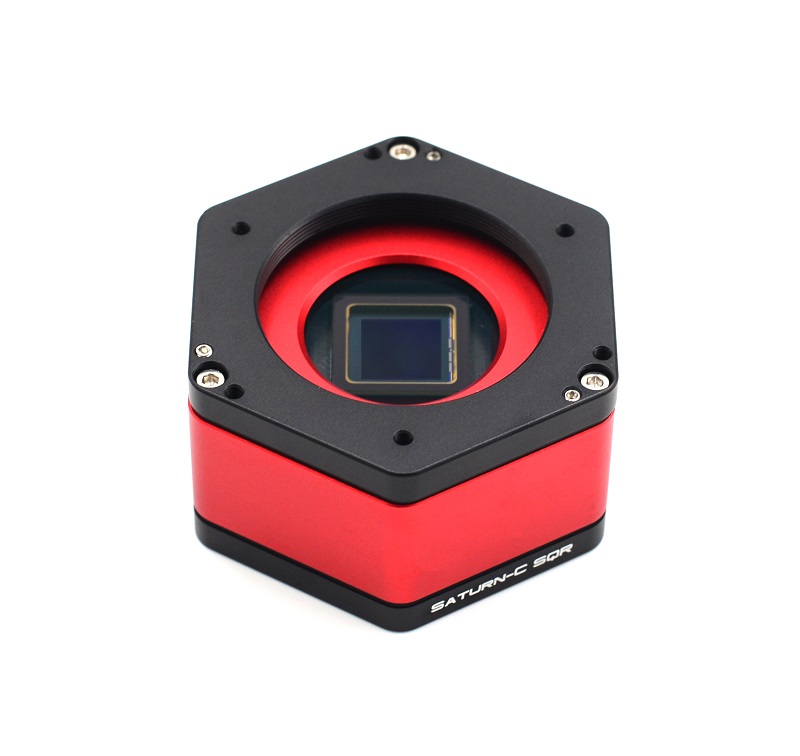
Technology for STARVIS
Saturn-C
SQR (IMX533) camera is based on the technology for Sony STARVIS. It is a
back-illuminated pixel technology used in CMOS image sensors.
Format
Saturn-C SQR camera has 1" format. The size is quite big for imaging.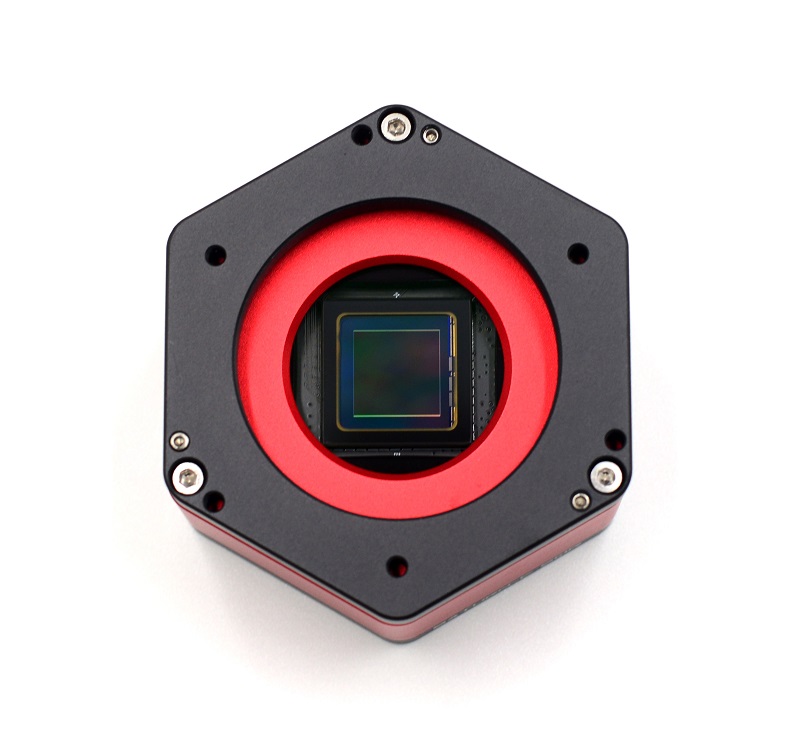
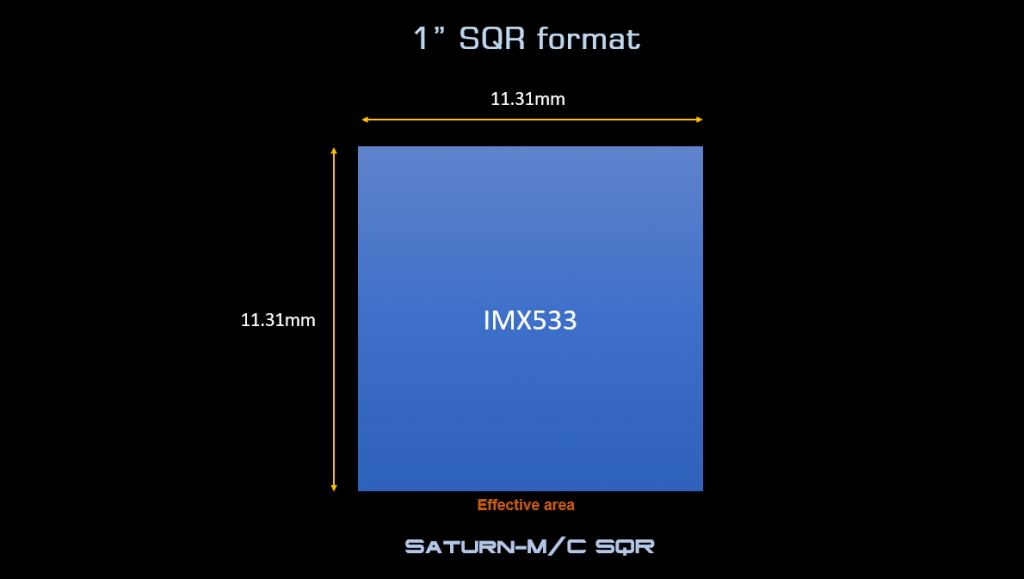
Extend Full Well Capacity
Based
on our technology, we improve the full well of the camera to 73Ke,
which is close to 1.5 times the nominal full-well of the IMX533 Basic
(50ke).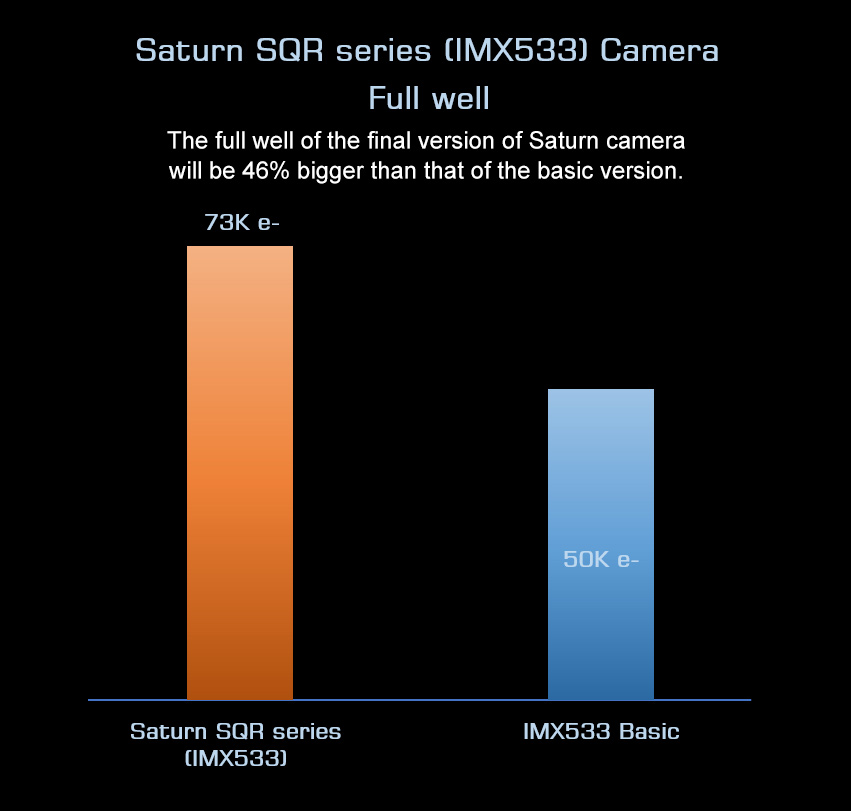
High Frame Rate
Based on our technology, the camera can run 43FPS under RAW8 mode. That's much faster than existing models on market.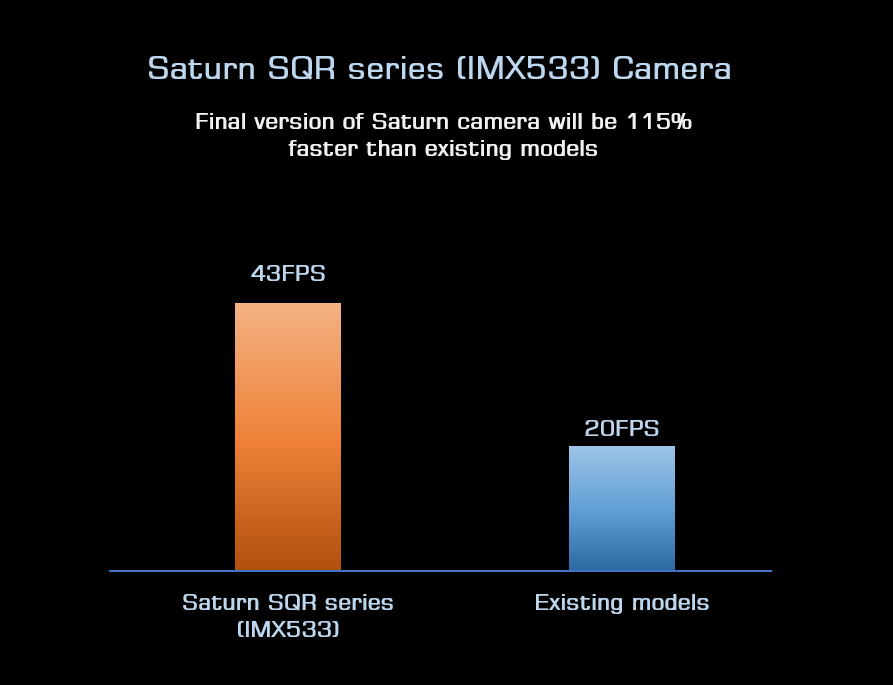
Dual Sampling Mode
Saturn SQR series has dual sampling mode, namely normal mode and LRN mode. They have different advantages in imaging.
1. Normal mode has faster FPS. It is more suitable for planetary imaging.
2. LRN (low readout noise) mode has lower readout noise and higher dynamic range. It is more suitable for DSO lucky imaging.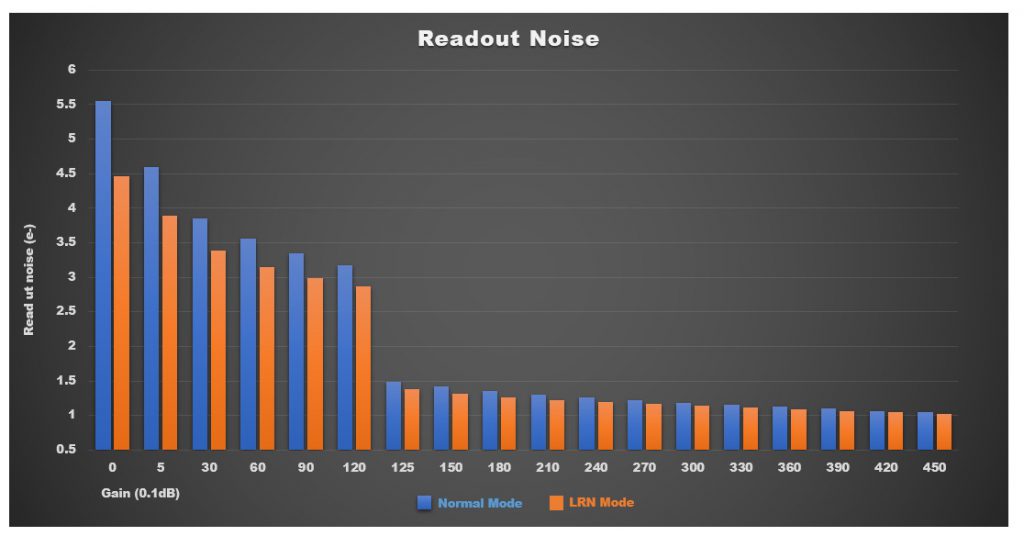
Highlights: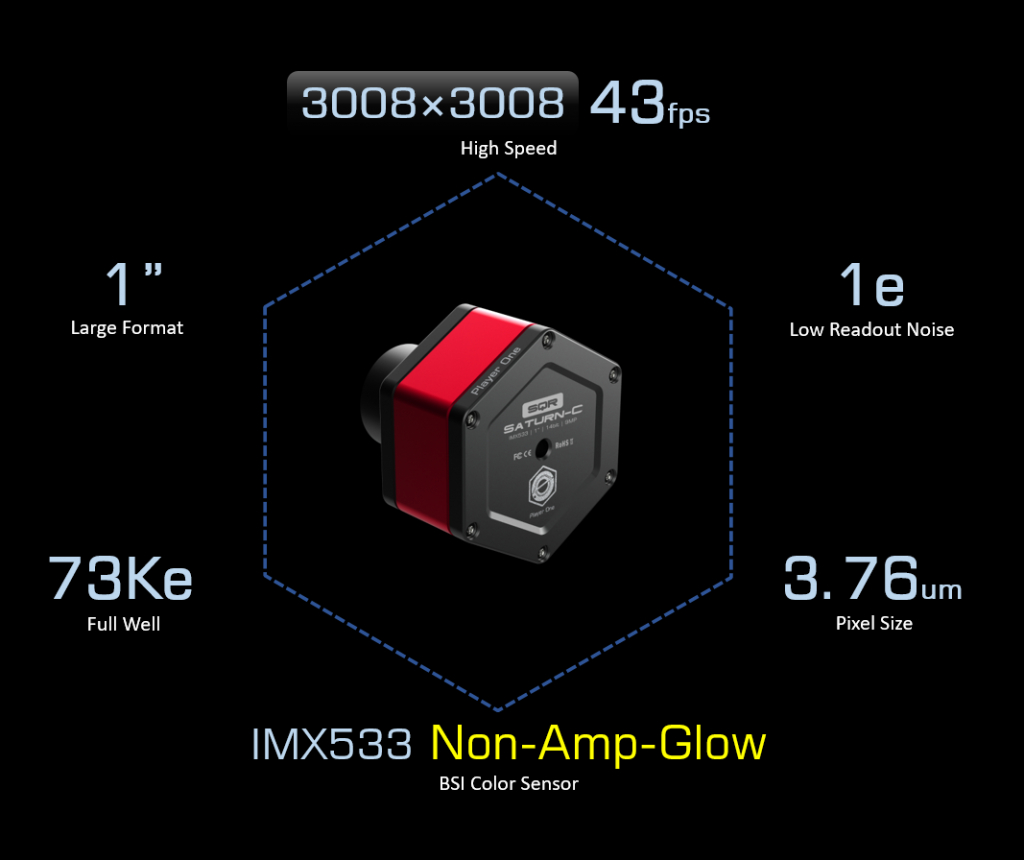
Non-Amp-Glow
Dark frame of Saturn-C SQR (IMX533) camera is totally "dark". That's whey we call it "Non-Amp-Glow" camera!
300s dark frame of Saturn-C SQR camera (resize to 50%):
Non-Amp-Glow can give us a very clean background, making it easier to get high quality images.
Recommended Accessories:
ACS
(Active Cooling System) is an external air-cooled system, designed for
solar and big format planetary cameras with PCS (Passive Cooling
System).
ACS can provide much better temperature control. When
your camera has PCS + ACS, its temperature is only 7℃ higher than
ambient temperature. The camera body is a little warm but is not hot!
ACS can be used in daylight for solar imaging. It can also be used at night for DSO lucky imaging.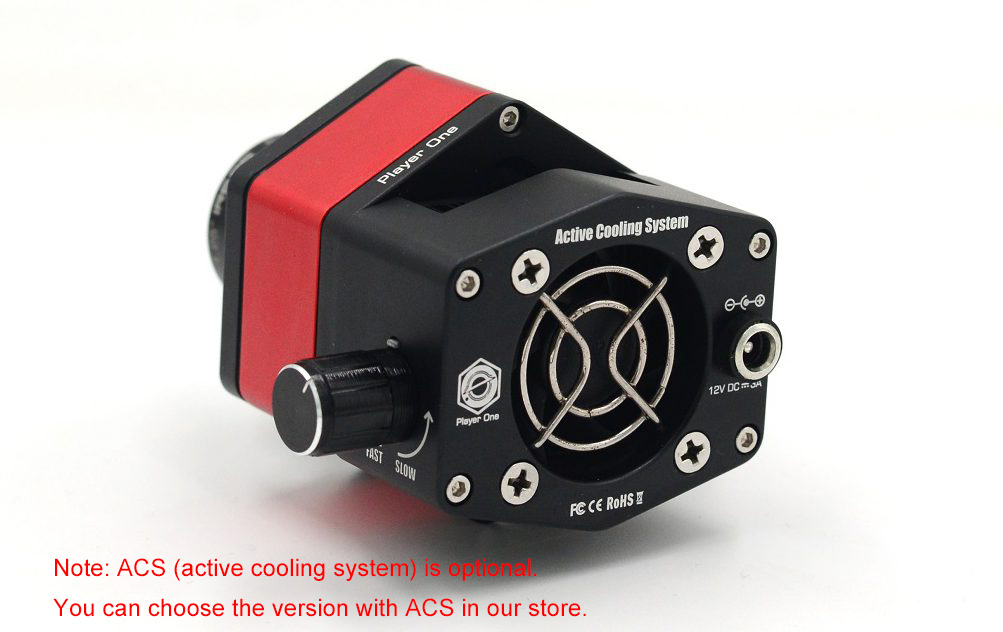
Saturn
SQR camera is also very good for lunar and planetary imaging. Its 1"
big format and 9MP total pixels make it easier to collect full disk of
the Moon and the Sun, or make mosaic more efficient.
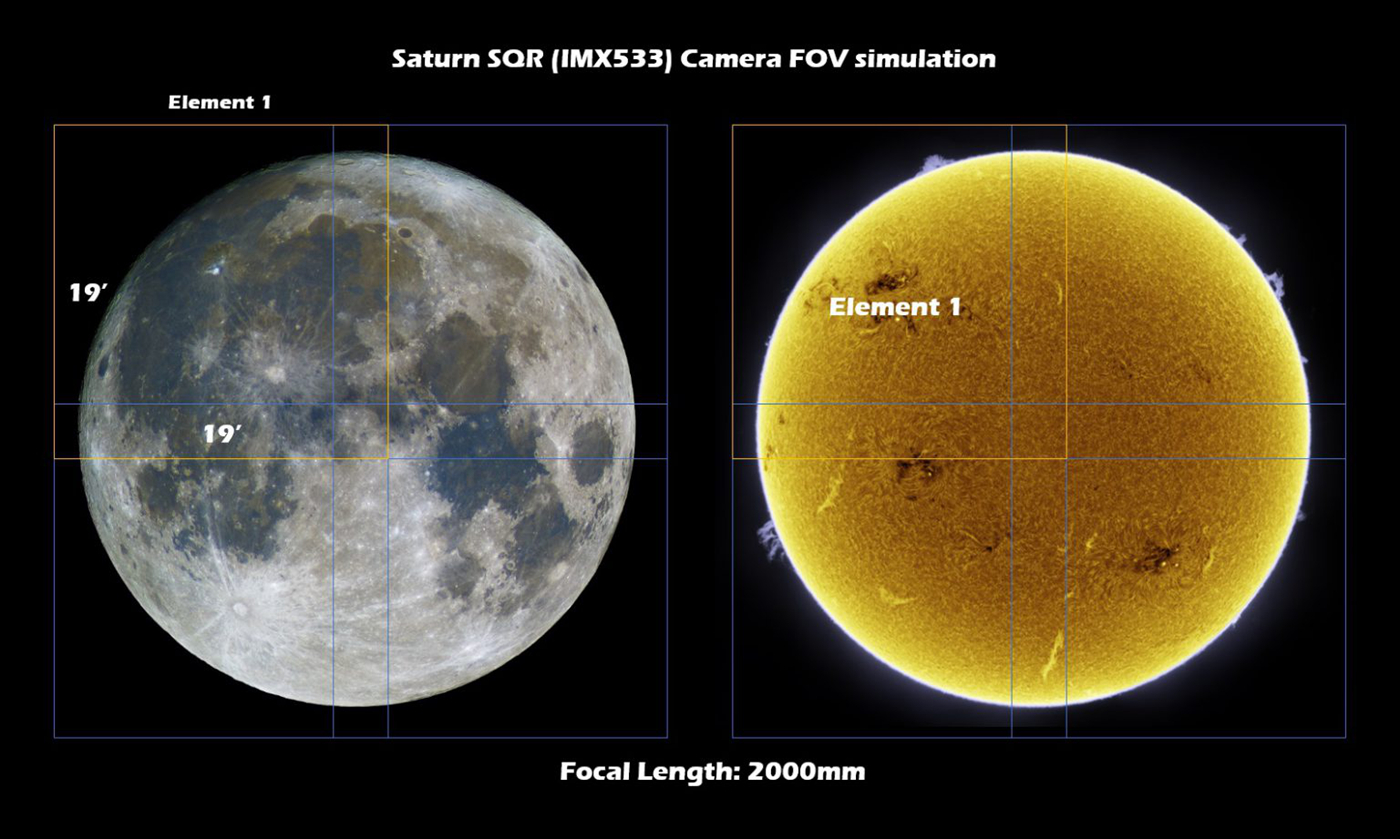
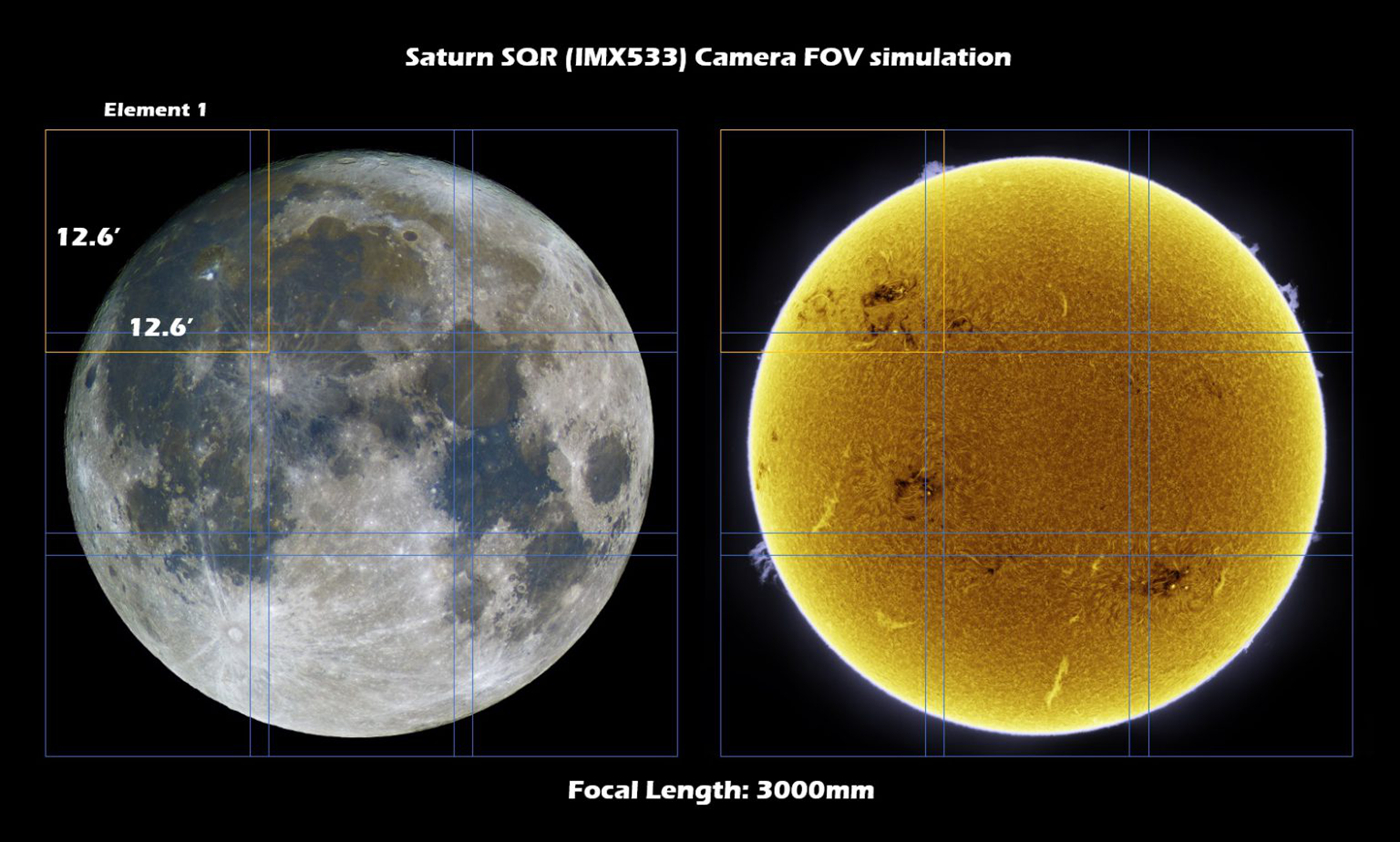
User Works Appreciation: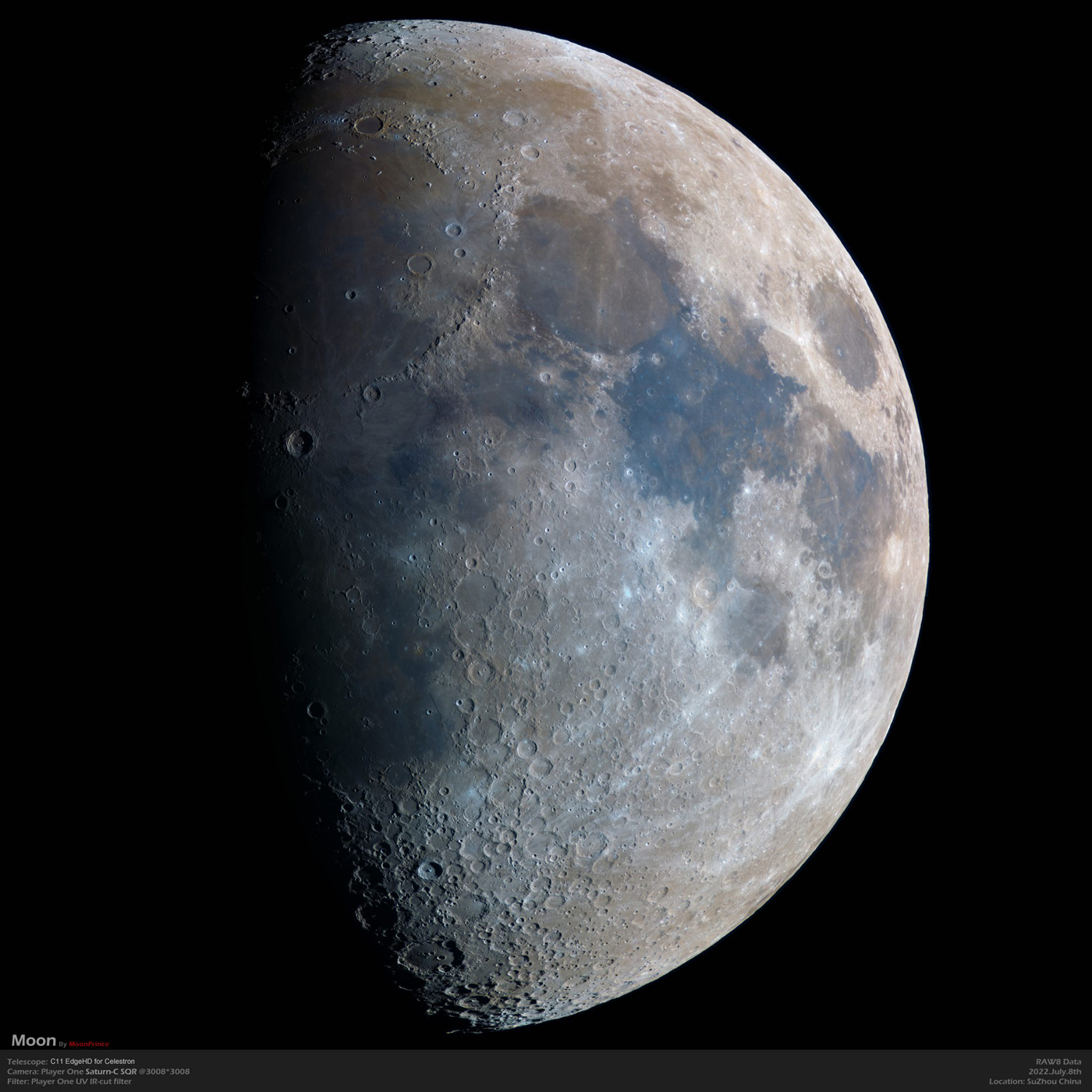
Features:
The
naming of Player One Astronomy cameras is unique. Planetary cameras are
named according to the sizes of planets, such as Mars (1/3"), Neptune
(1/2"), Uranus (1/1.2"), Saturn (1") and Jupiter (4/3").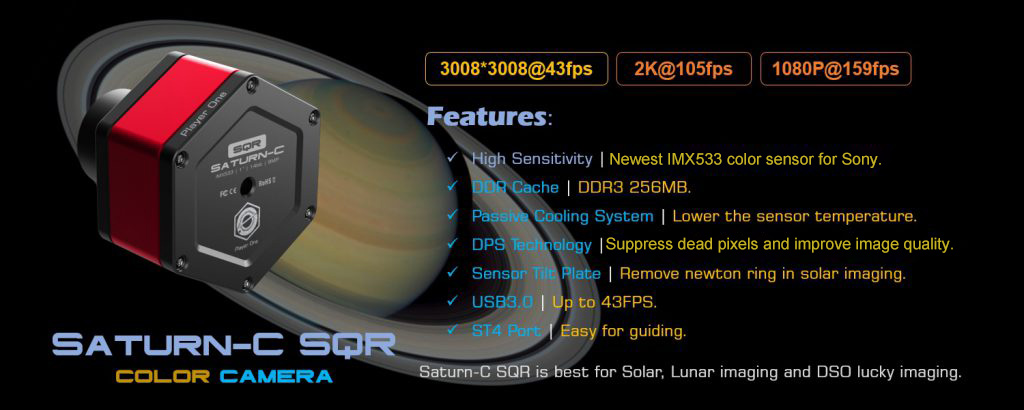
Download drivers and software: http://player-one-astronomy.com/service/software/
Download manuals: http://player-one-astronomy.com/service/manuals/
Cutting-edge Design
The
planetary camera uses a scientific and technological regular hexagon to
construct the main body line, supplemented by round chamfers to achieve
both rigidity and flexibility. The positive red, which is like a summer
fire, is matched with the low-key and steady black, and the super-fine
frosting process on the entire surface makes the camera look luxurious
and cool, highlighting the style of high-end players.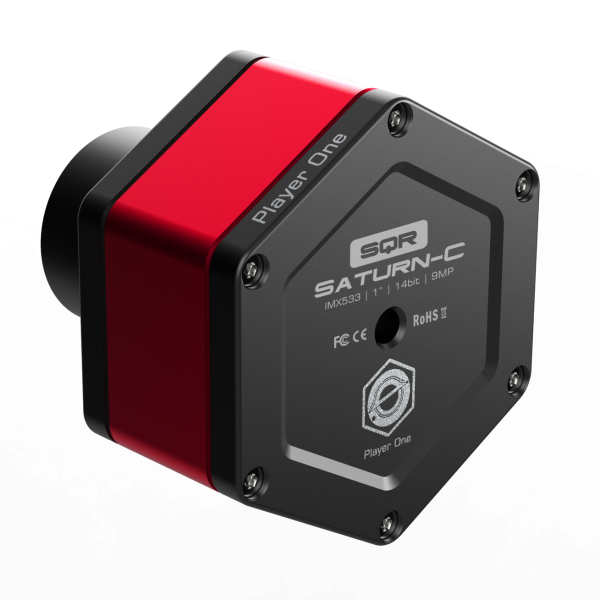
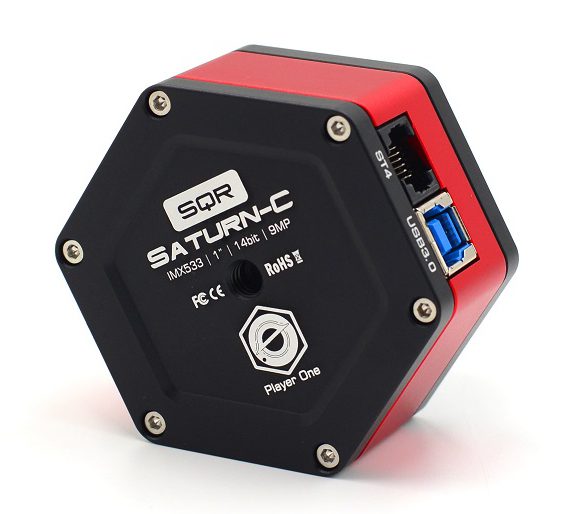
2nd Gen – Sensor Tilt Plate
When
you are taking pictures of deep sky objects, using sensor tilt plate
can get a much smaller field curvature of the telescope.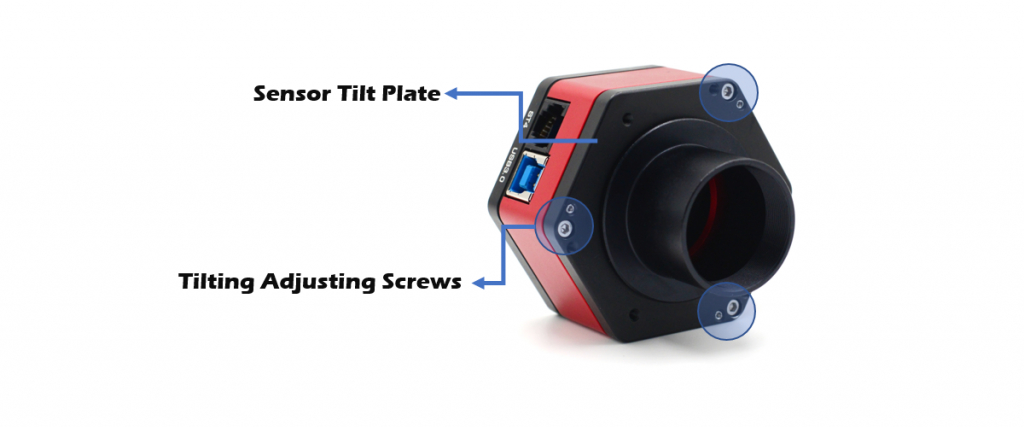
The built-in high-density sponge shading pad can block the light from the side slits without any side leakage.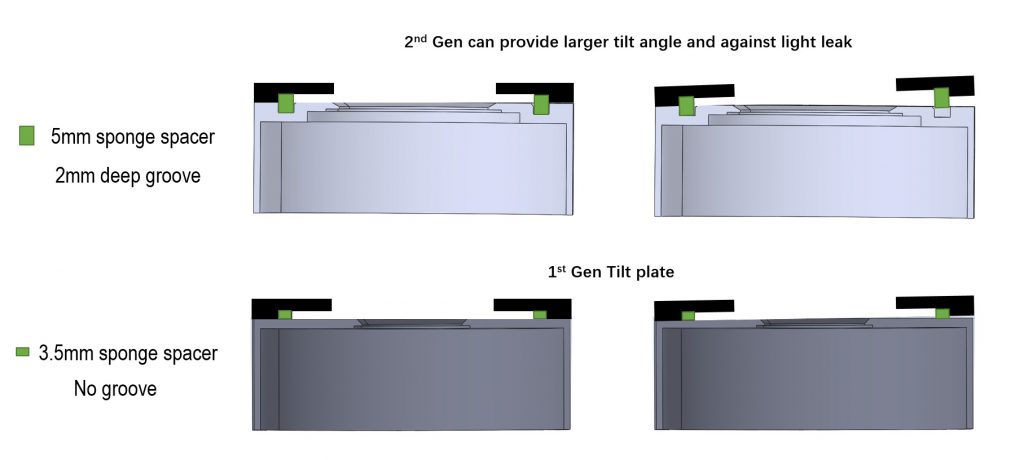
Passive Cooling System
Player One adds a new feature called Passive Cooling System to conduct the heat from the sensor out.
256M DDR3 Cache
Among
planetary cameras, this astronomy camera is the first one to adopt the
DDR3 cache. It helps stabilize and secure data transmission. It
effectively avoids frame dropping and greatly reduces readout noise.
With
the DDR3 cache, the camera does not have high demands on computing
needs any longer. But it still has an excellent performance even if it
is connected to a USB 2.0 port.
DPS Technology
The
planetary camera has DPS (Dead Pixel Suppression) technology. The DPS
can analyze many dark frames to find out those fixed abnormal pixels and
record the map in camera memory. In imaging, each exposure frame and
those positions of dead pixels will be given a median value according to
the active pixels around that abnormal pixel.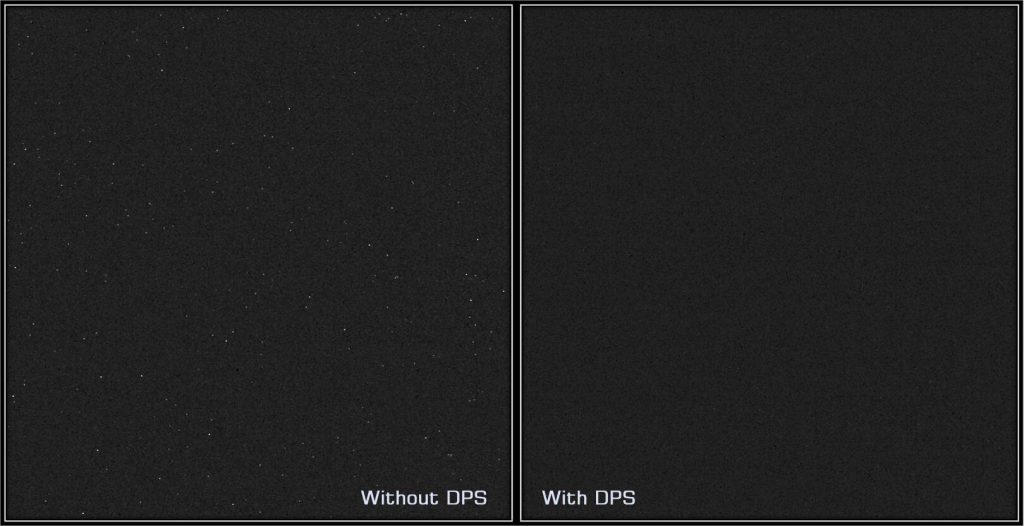
Over-voltage and Over-current Protection Mechanism
The camera ensures the safety of your camera and other equipment through over-voltage and over-current protection mechanisms.
Data Port
When
the camera is connected to the USB3.0 interface and full-resolution
preview is used, it can reach 43 FPS in RAW8 mode (10bit ADC). When it
is recording images, the actual writing speed will be affected by the
writing speed of the hard disk itself. When the hard disk writing speed
is slow, the recording may not reach the theoretical speed. It is
recommended that you use a high-quality solid state drive to record data
to give full play to the performance of the camera.
Use the ST4 guide cable to connect the camera and the AUTO GUIDE port of the equatorial mount to do guiding.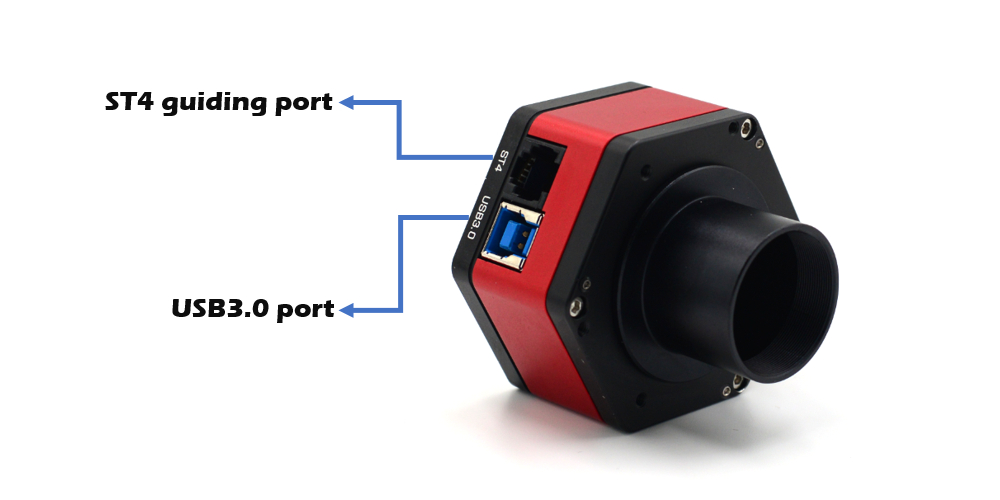
Performance:
HCG
open at gain=125. Saturn SQR series has dual sampling mode. Standard
mode has faster fps, and LRN (low readout noise) mode has lower readout
noise and higher dynamic range.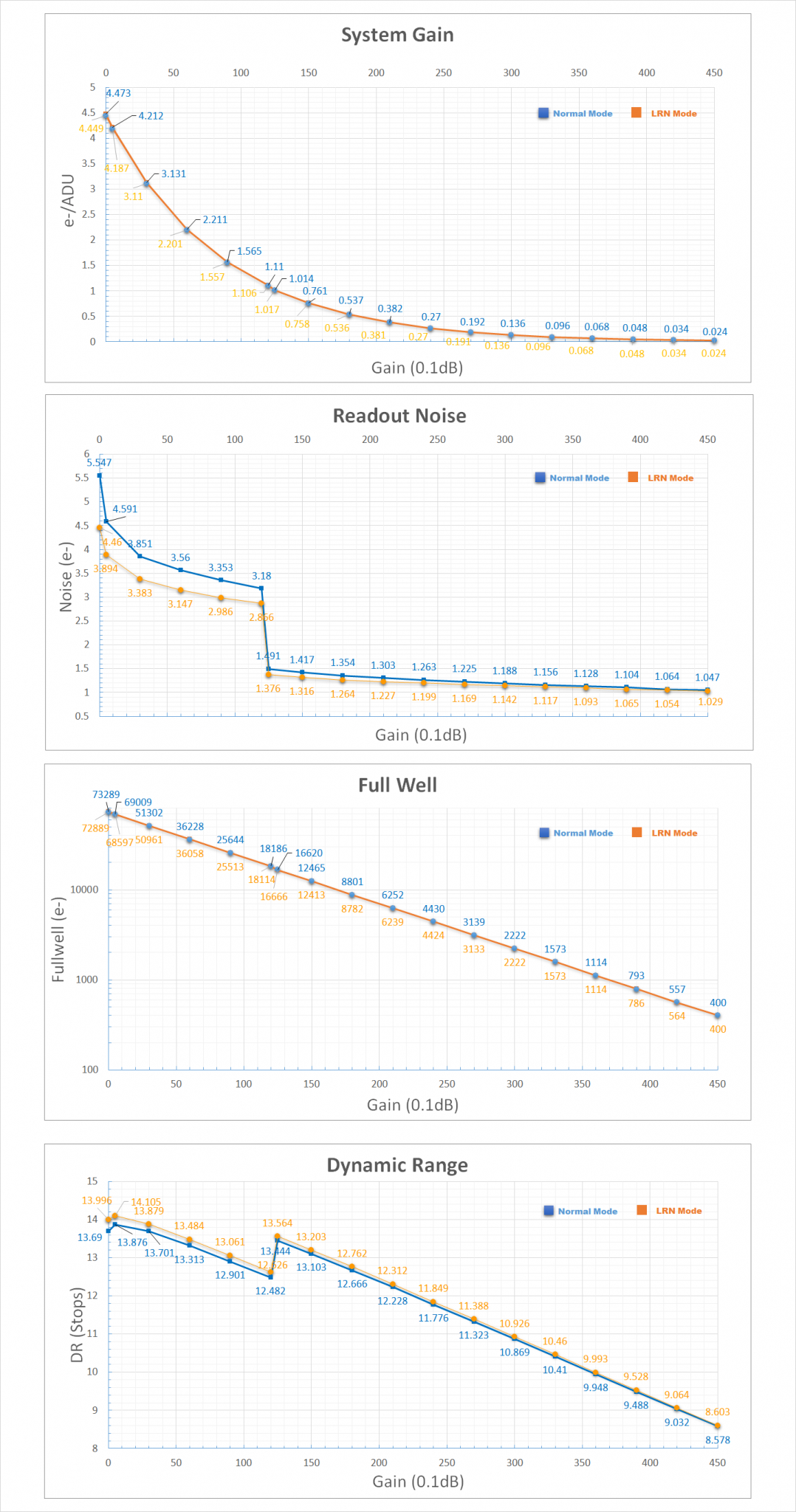
Readout Noise
Regarding
readout noise, we solemnly promise that all values are obtained from
actual tests.And for users, you could use the software for Sharpcap 4
for testing. SC4 has a function called Sensor Analysis, providing a very
simple way to test readout noise.
We wrote a tutorial on our website: https://player-one-astronomy.com/service/manuals/
If you are interested in readout noise testing, you may try it by yourself because it is very simple.
QE Curve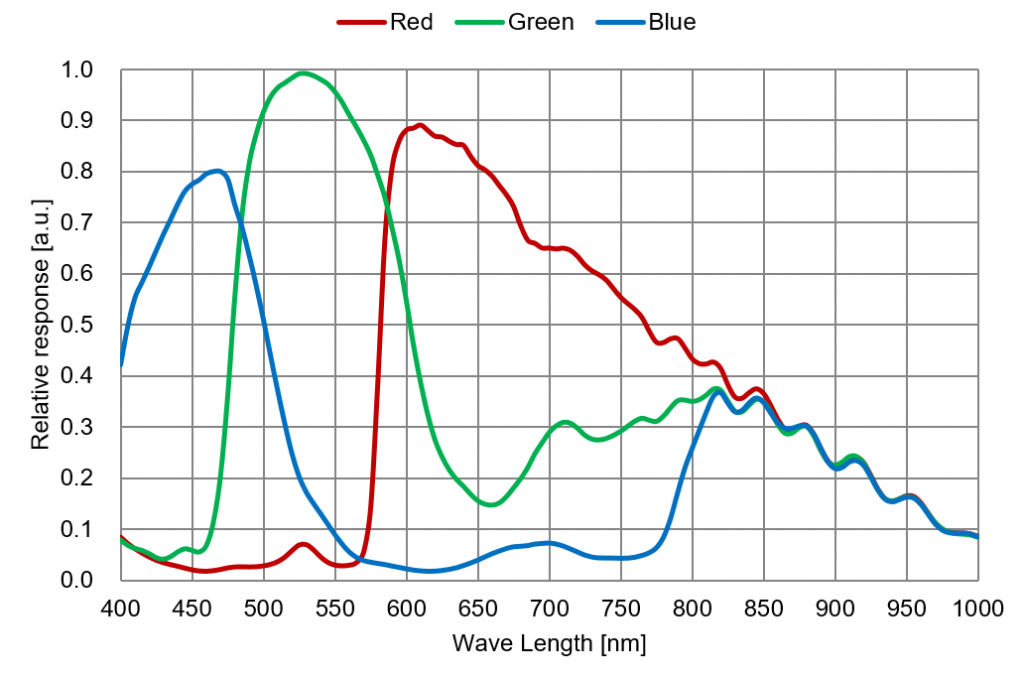
Mechanical Drawing: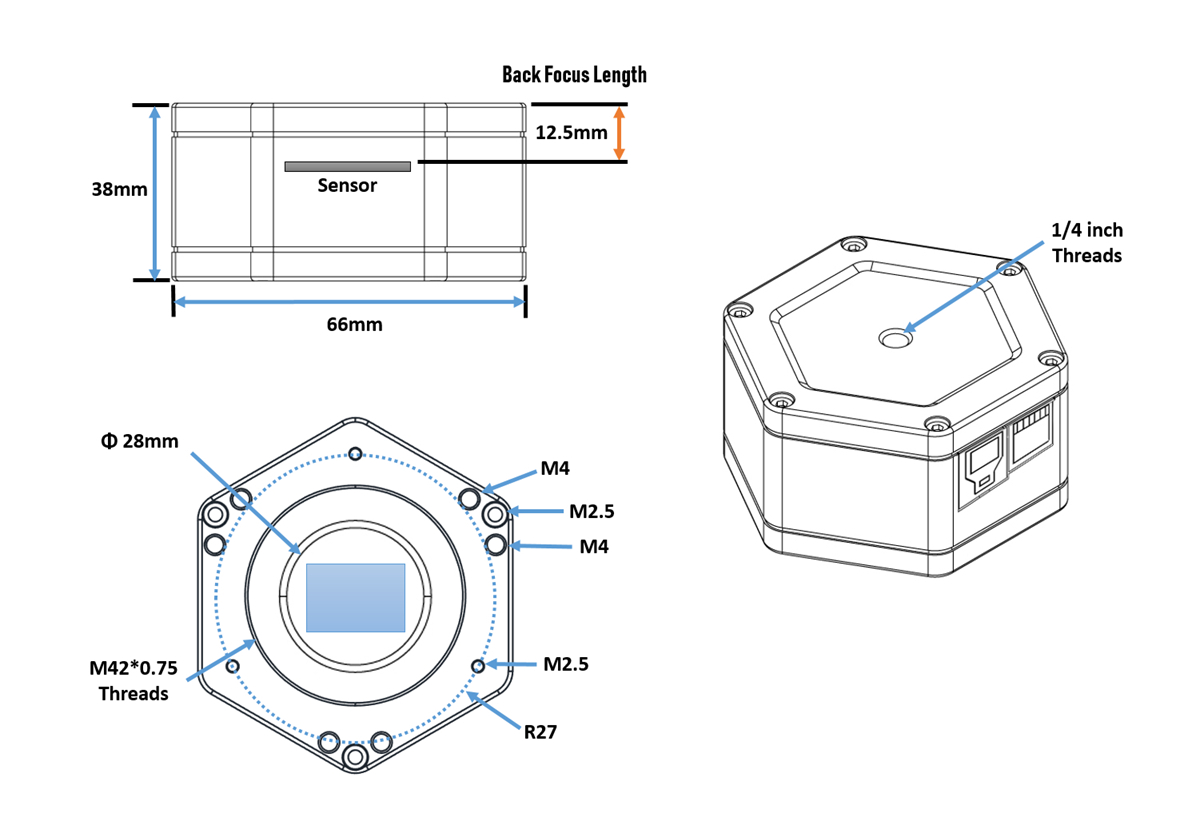
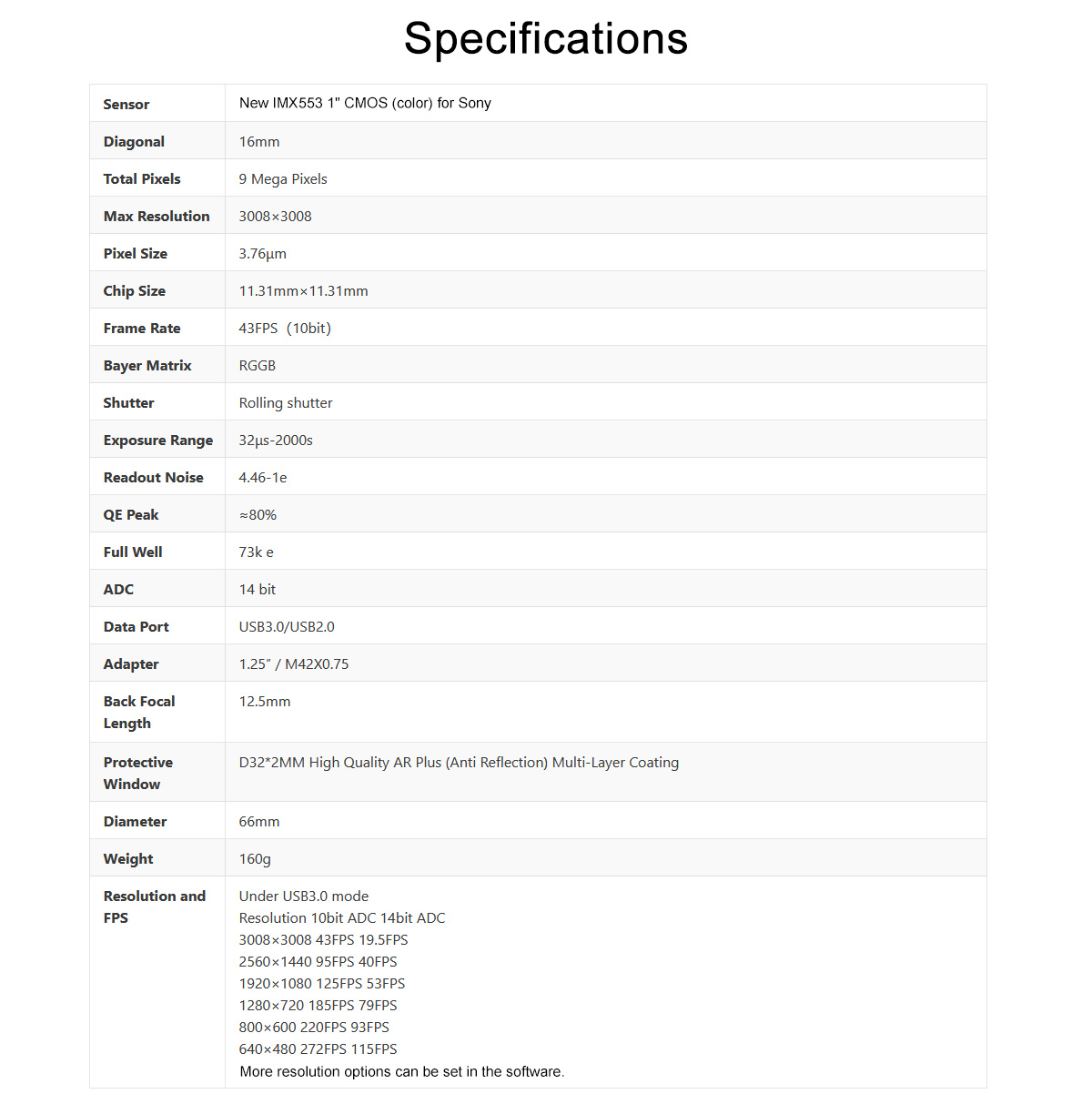
Package Included:
- 1 x Camera & 1.25" T-mount
- 1 x Active cooling system (ACS)
- 1 x 2M USB3.0 cable
- 1 x 2M ST4 cable
- 1 x 1.25" cover
- 1 x Air blower
- 1 x M2 hexagonal wrench
Packaging Details:
- G.W.: 1kg